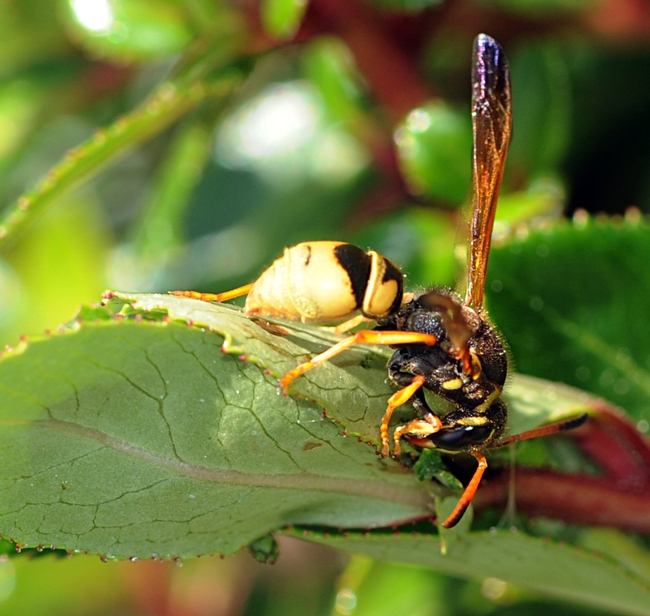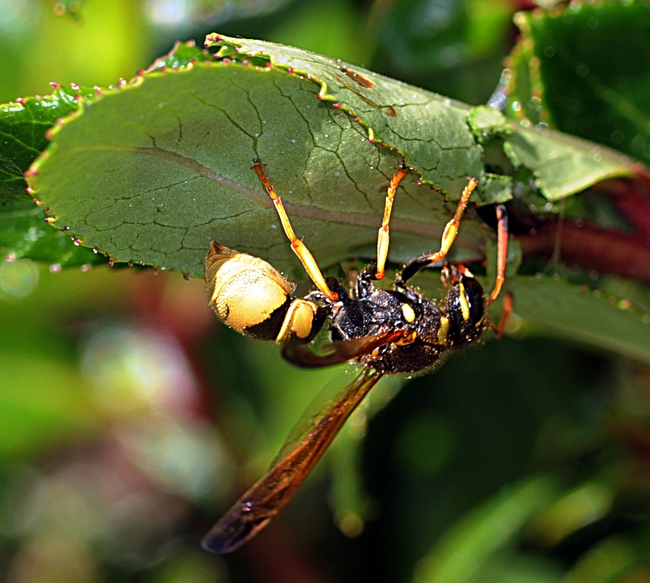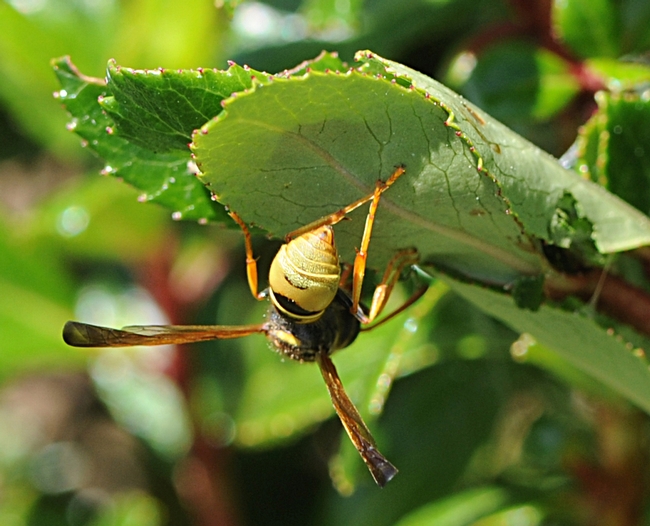- Author: Kathy Keatley Garvey
If you've ever stepped in sticky gum, it's similar to what happens when an insect steps into milkweed pollinia.
Take the wasps visiting the tropical milkweed (Asclepias curassavica) on Thursday morning, July 16 in the UC Davis Arboretum and Public Garden.
They foraged on the colorful red, yellow and orange blossoms, and as nature intended (for reproductive reasons), flew off with that sticky pollinia from the anthers.
Basically, pollinia is a sticky packet of golden pollen grains originating from a single anther. The wishbone-shaped pollinia are in a nectar trough where insects often get trapped. Some insects manage to escape but leave body parts behind. A foot here...a wing there...an antenna over there...
One wasp exited a flower with "the golden glue" on its feet.
“Too funny with all the milkweed pollinia all over its feet,” commented Lynn Kimsey, director of the Bohart Museum of Entomology and Nematology and professor of entomology at UC Davis, who identified the wasp as a species of Podalonia, parasitoidal wasps in the family Sphecidae. "It looks like it's wearing fluffy socks.”
We've seen honey bees on showy milkweed (Asclepias speciosa) struggling to free themselves, only to find the bees dead the next day--and new recruits buzzing in for their share.
These Podalonia wasps, however, managed to navigate the "traps" quite well.
They'll be back for another round.
(Reminder: Folks planting the tropical milkweed in temperate zones (like here in Davis, Calif.) must remove or cut back the tropical milkweed by winter. "A protozoan parasite of monarch butterflies, Ophryocystis elektroscirrha or OE for short, can travel with monarchs visiting the plants and become deposited on leaves," explains the Xerces Society for Invertebrate Conservation.)
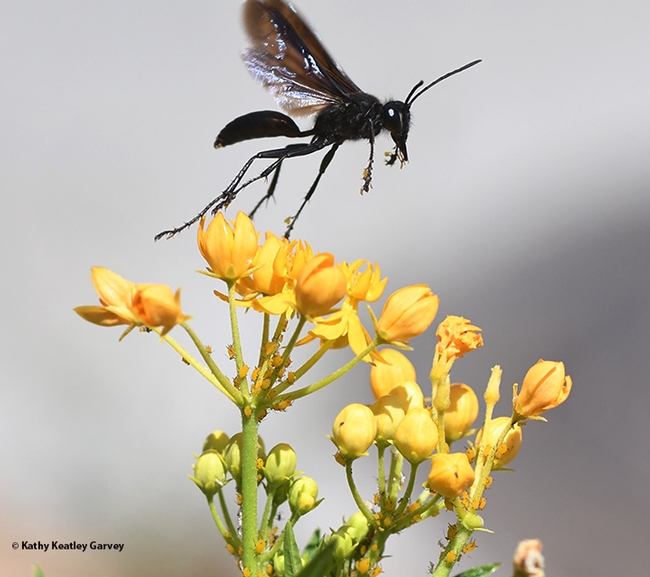
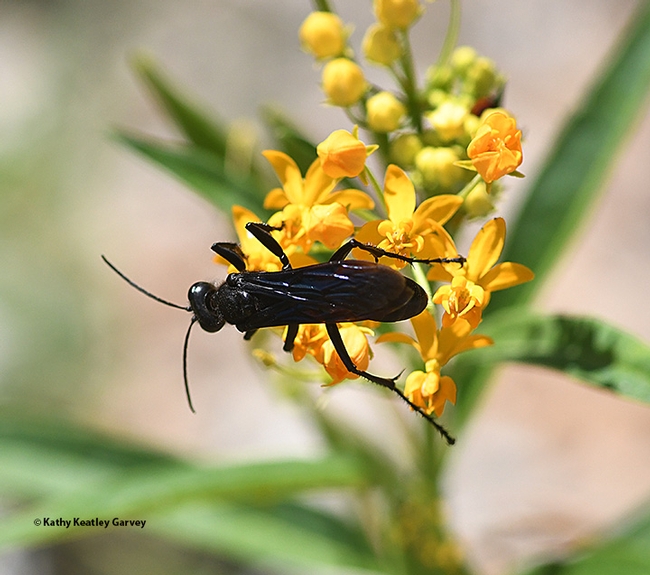
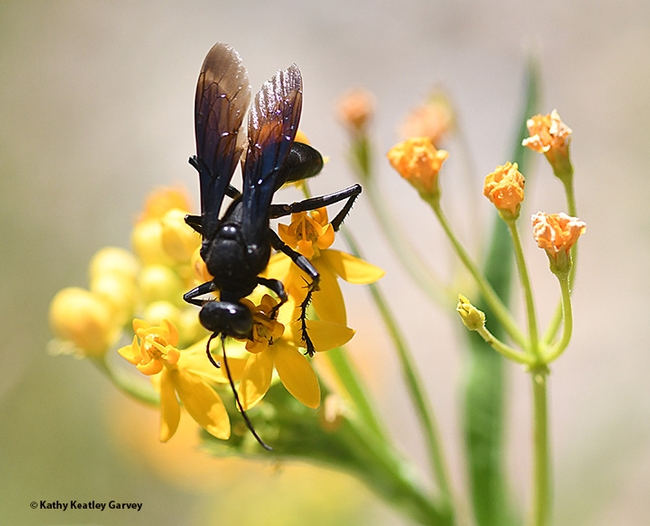
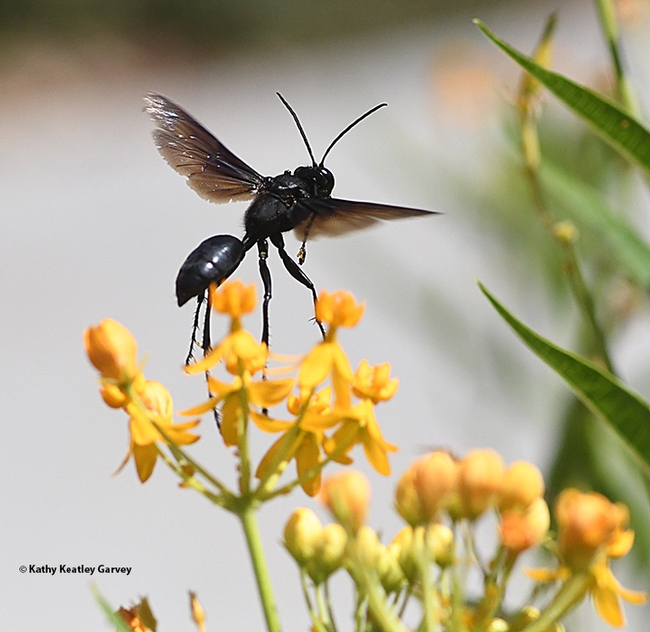
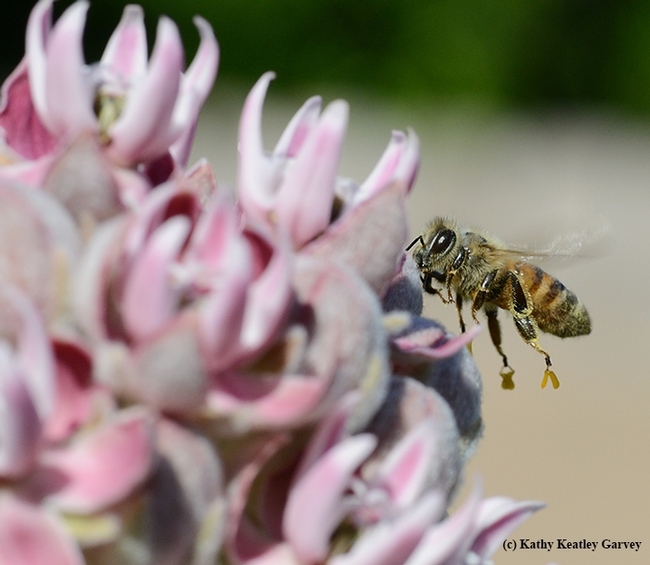
- Author: Kathy Keatley Garvey
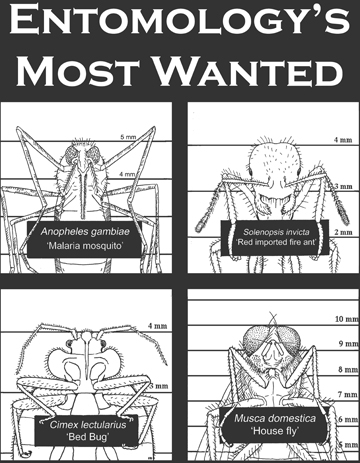
And create a "new species" of wasp in the process.
A penny-farthing, as the UC Davis community knows, is also called a high wheel bicycle or high wheeler. The front wheel is much larger than the rear wheel. And a wasp, as entomologists know, belongs to the order Hymenoptera, which includes bees, ants and wasps.
The end result of the art/science fusion project: the winning entry in the annual T-shirt contest sponsored by the Entomology Graduate Students' Association, UC Davis Department of Entomology and Nematology.
“I wanted to draw a penny-farthing, which is part of the UC Davis culture,” said winning artist Stacey Rice, a junior specialist in the lab of Extension entomologist Larry Godfrey. “Then I wanted an insect that would be able to put its abdomen on the seat and have long enough legs to reach the pedals.”
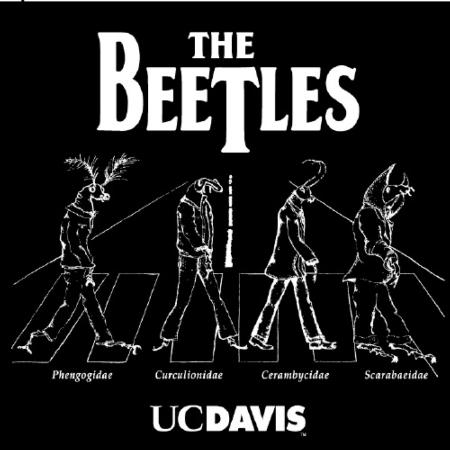
“I love the new design and think it translated very well on the t-shirts,” said EGSA treasurer and entomology graduate student Cindy Preto of the Frank Zalom lab. “I expect it to be a great seller.”
In the Godfrey lab, Rice doesn't work with wasps. She does research on Bagrada bugs (Bagrada hilaris), an invasive stink bug from Africa known for attacking cole crops, including broccoli, cabbage, collards, Brussels sprouts, cauliflower, kale, and mustard.
An alumnus of UC Davis, Rice received her bachelor's degree in biological sciences with a minor in veterinary entomology in March 2015. Her goal is to attend graduate school and receive her doctorate, either in integrated pest management (IPM) or forensic entomology.
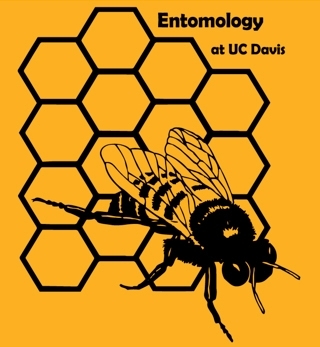
Rice, who grew up in Roseville and graduated from Oakmont High School, enjoys combining art with science in her ceramic art classes at the UC Davis Crafts Center.
EGSA has launched an online store to sell the newly designed shirt and other favorites. More information is available from Preto at crpreto@ucdavis.edu. All proceeds benefit EGSA.
The "Hymenoptera on Bicycle" t-shirt can be ordered in unisex heather navy with white lettering ($15 for small, medium, large, extra large and 2x); youth navy with white lettering ($15 for small, medium and large); and women's cut, heather red with light yellow lettering ($17 for small, medium and large).
The t-shirts from years past include "The Beetles" (reminiscent of The Beatles' Abbey Road album), a weevil (See no weevil, hear no weevil, speak no weevil), a dung beetle, honey bee and comb, and a "wanna bee."
Among the other favorites is "Entomology's Most Wanted." Former graduate students Nicholas Herold and Emily Bzydk featured "bug shots" (a take-off of "mug shots") of the malaria mosquito (Anopheles gambiae), the red imported fire ant (Solenopsis invicta) bed bug, (Cimex lecturalius), and the housefly (Musca domestica). They're among the most hated of insects.
The wasp on a wheel is probably destined to become a favorite, too, especially among the bicycling and insect science communities.
That's how we roll at UC Davis!
Related Link:
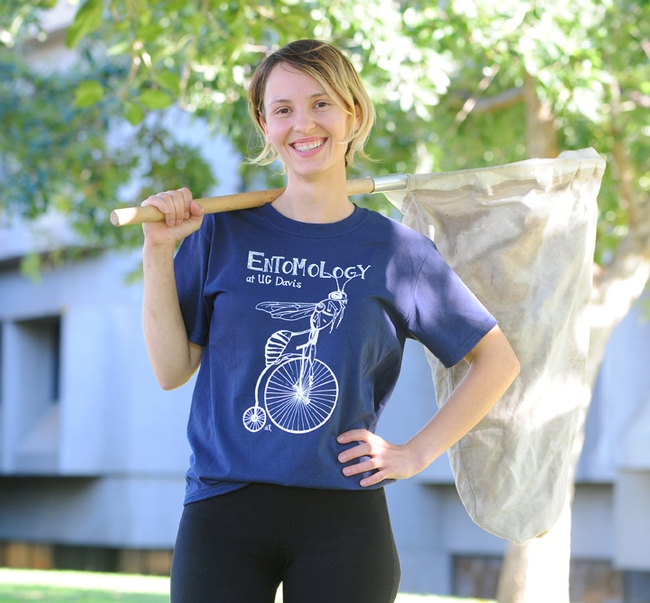
- Author: Kathy Keatley Garvey
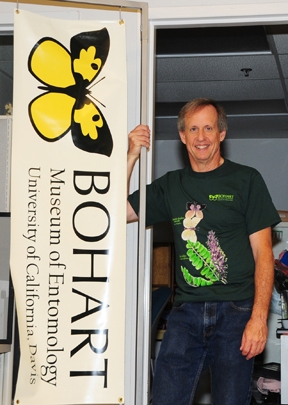
Say you're a caterpillar or an aphid and a wasp comes along and lays her eggs inside you. Her eggs will hatch and then her offspring will eat their way out. You, the host, are no more. Zero. Zip. Zilch.
If you visit the Bohart Museum of Entomology open house on Sunday, Jan. 11 on the University of California, Davis, campus, you'll learn all about parasitoids.
The fun, educational and family-friendly event is themed, "Parasitoid Palooza!" Free and open to the public, it takes place from 1 to 4 p.m. in Room 1124 of the Academic Surge Building on Crocker Lane,
"Most everyone knows that mantids eat other insects or that ladybird beetles (lady bugs) consume lots of aphids, but there is another way insects eat other insects," commented Tabatha Yang, education and outreach coordinator.
"An insect parasitoid is a species whose immatures live off of one insect host, usually eating it from the inside out," she said. "It is part of their life cycle and the host dies. This sounds like a weird way to make a living, but there are more species of parasitoids than there are insects with any other single kind of life history. The movie Alien with Sigourney Weaver co-opts this phenomenon, but in reality there are no parasitoids on humans or other vertebrates."
The Bohart open house will spotlight this unusual life cycle. Wasps, flies and beetles are parasitoids to many different insect groups.
Senior museum scientist and collections manager Steve Heydon, is a world authority on Pteromalids, or jewel wasps, a group of tiny parasitoids, and will be on hand to talk about them.

Live parasitoids from the lab of Michael Parrella, professor and chair of the UC Davis Department of Entomolology and Nematology will be showcased. They include Encarsa, Eretmocerus, Diglyphus and Aphidius.
"Parasitoid Palooza" promises to be a fun and wacky celebration of the diversity of life, Yang said. A family-friendly craft activity with balloons inside of balloons (representing parasitoids) is planned.
Before you go, be sure to check out Wired.Com's piece on a wasp from the genus Glyptapantele laying eggs in a caterpillar. Tachinid flies also provide biological control services, laying their eggs in a number of insects, including beetles, moths, sawflies, earwigs and grasshoppers.
Along with parasitoids, visitors will see some "teddy bear" bees or male Valley carpenter bees, to be shown by native pollinator specialist Robbin Thorp, emeritus professor of entomology at UC Davis. Allan Jones of Davis, a noted insect photographer, delivered some to Thorp's office in the Harry H. Laidlaw Jr. Honey Bee Research Facility last week. Their origin? A friend's felled apple tree in Davis. The tree had rotted and male and female Valley carpenter bees were wintering inside.
The Bohart Museum, directed by Lynn Kimsey, professor of entomology at UC Davis, houses a global collection of nearly eight million specimens. It is also the home of the seventh largest insect collection in North America, and the California Insect Survey, a storehouse of the insect biodiversity.
Special attractions include a “live” petting zoo, featuring Madagascar hissing cockroaches, walking sticks and tarantulas. Visitors are invited to hold the insects and photograph them. The museum's gift shop, open year around, includes T-shirts, sweatshirts, books, jewelry, posters, insect-collecting equipment and insect-themed candy.
The Bohart Museum's regular hours are from 9 a.m. to noon and 1 to 5 p.m. Mondays through Thursdays. The museum is closed to the public on Fridays and on major holidays. Admission is free. Open houses, focusing on specific themes, are held on weekends throughout the academic year.
The remaining schedule of open houses:
- Sunday, Feb. 8: “Biodiversity Museum Day,” noon to 4 p.m.
- Saturday, March 14: “Pollination Nation,” 1 to 4 p.m.
- Saturday, April 18: UC Davis Picnic Day, 10 a.m. to 3 p.m.
- Sunday, May 17: “Name That Bug! How About Bob?” 1 to 4 p.m.
- Saturday, July 18: “Moth Night,” 8 to 11 p.m.
More information is available by contacting Tabatha Yang, education and public outreach coordinator at tabyang@ucdavis.edu or (530) 752-0493.
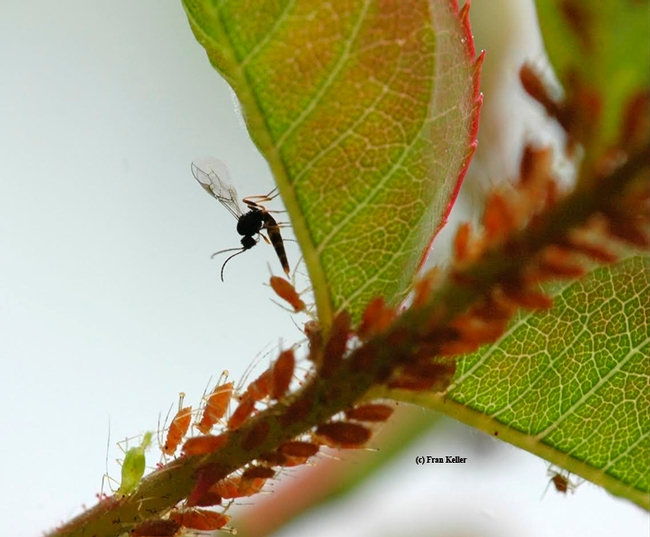
- Author: Kathy Keatley Garvey
We saw her touch down in our nectarine tree last weekend.
Big green compound eyes glowed at us.
She moved up and down a branch, foraging for food, and then took off.
A wasp. The carnivore cousin of the vegetarian honey bee. They belong to the same order, Hymenoptera.
The green-eyed wasp? Genus Tachytes, as confirmed by noted "wasp woman" Lynn Kimsey, director of the Bohart Museum of Entomology and professor of entomology at the University of California, Davis. The green eyes are a distinguishing feature of the genus.
Tachytes is a member of the Crabronidae family or "sand-loving wasps." The females burrow into sandy soil, and provision their nest with such paralyzed prey as katydids and grasshoppers. Meanwhile, their cousins, the honey bees, are out collecting nectar and pollen.
If you're looking for something to do this summer, be sure to check out the Bohart Museum, located in Room 1124 Academic Surge, corner of La Rue Road and Crocker Lane (formerly California Drive). Regular hours are from 9 a.m. to noon and from 1 to 5 p.m., Monday through Thursday. It is closed to the public on Fridays and on major holidays. Admission is free.
There's always something to see and do at the museum, what with more than seven million insect specimens collected from around the world. And you can meet the critters in the "live petting zoo," including walking sticks and Madagascar hissing cockroaches.
Be sure to check out the Hymenoptera specimens in the museum's display cases. You'll be amazed.
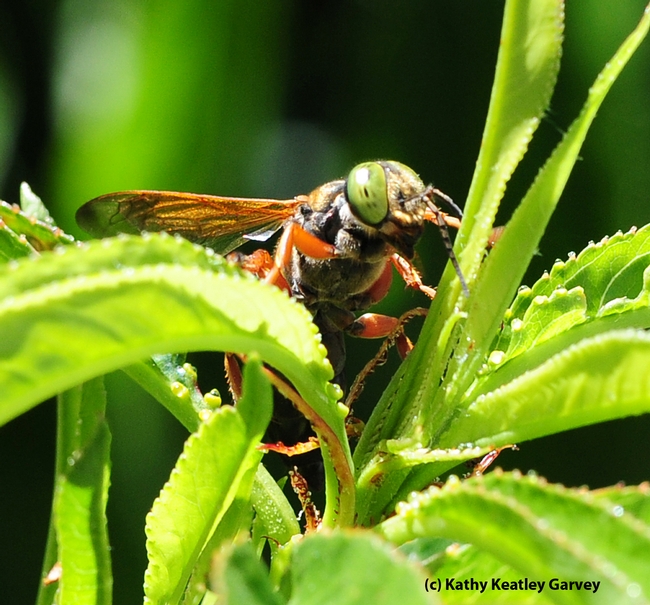
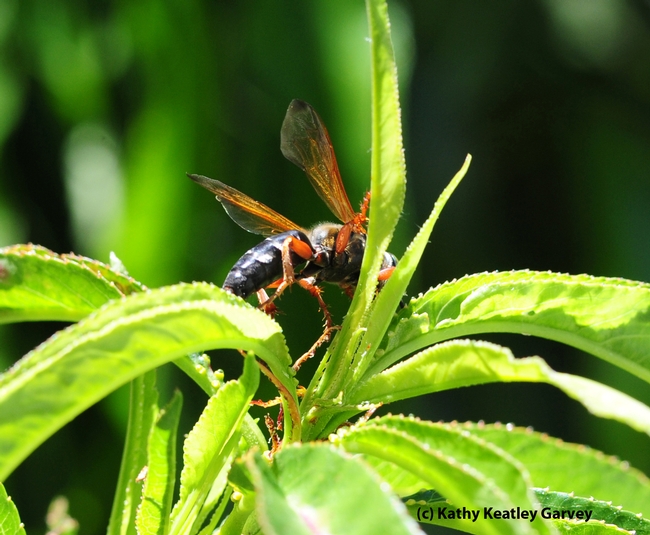
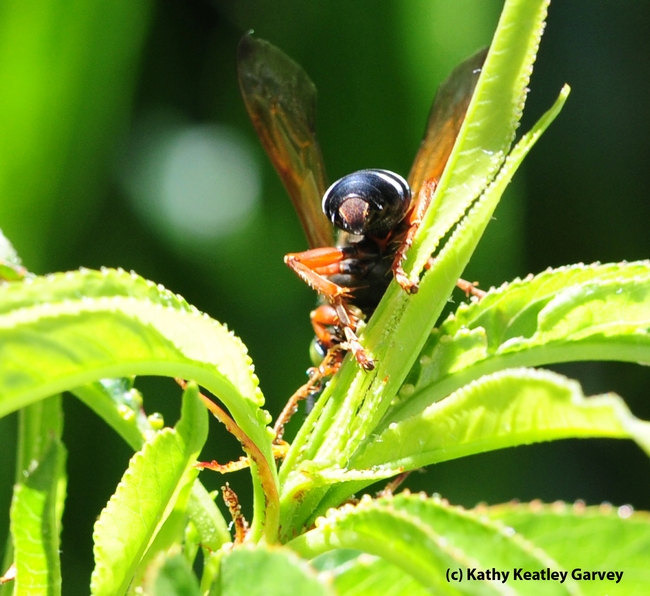
- Author: Kathy Keatley Garvey
Do you brake for wasps?
We spotted a bumper sticker on the UC Davis campus the other day that read: "I brake for wasps."
It was parked in the Briggs Hall loading zone--Briggs is the home of the UC Davis Department of Entomology--so I imagine it was braking for wasps right then and there.
It was not a car owned by self-described "wasp woman" Lynn Kimsey, director of the Bohart Museum of Entomology and professor of entomology at UC Davis.
But she wants one of those bumper stickers!
The colorful wasp below was foraging recently on an Indian hawthorn (Rhaphiolepsis umbellata 'Olivia') at the Benicia marina. Kimsey identified it as a "a solitary vespid, probably in the genus Stenodynerus. This is a male. The females feed on caterpillars."
Of these wasps: "They are pretty interesting," Kimsey said. "The males have the last antennal segment like a finger folded up against the adjacent segment. You can see it in one of the photos."
